While it is easy to create and maintain your compost pile, you can enjoy it more knowing a few basic tips.
International Compost Awareness Week (ICAW) is May 7 through May 13, 2017. First launched in 1995, ICAW is a great opportunity to share enthusiasm and awareness of the benefits of composting to the soil, the climate, and your backyard.
Just a few of the benefits of composting include:
- Composting lets you reduce your waste footprint. Recycling food and garden waste through composting allows you to use, and save, resources more completely.
- When you compost, you keep food out of landfills. According to the National Resources Defense Council, about 40% of food in the US gets dumped in landfills. Wasted food in landfills is the largest solid municipal waste filling up our trash piles. Buried in layers with other waste, decaying food rots and releases methane, a potent greenhouse gas.
- Compost feeds the soil with beneficial microbes, fungi, and nutrients, reducing your need to use chemical fertilizers and improving the structure of the soil.
Food waste, microbes, and you make compost happen. Add some water, air, and a box or bin, and you are in business. Composting is not just a bright idea — it's a necessity to help slow climate change, use resources properly, and continue to build the soil that grows our food in the first place.
Composting is not hard to do, as beneficial bacteria and other decomposing organisms do most of the work. Get off to a good start with some basics:
Location, Location, Location
For an outdoor bin, make sure your composter is animal-proof and seated square on the ground. There is no need for flooring, as the bin will drain more easily sitting straight on the dirt.
Look around your yard for a handy location that is not in full sun, or near large trees or invasive vines. Since the bin is encouraging decomposition, do not place the bin near a wood shed or fence. Try to find a spot that is not intrusive, but is convenient for depositing compostables. You can keep a sealable waste bin under your sink to gather food waste and make less frequent trips out to your composter.
Compost Bins
The compost bin is where plant waste, bacteria, water, and air make compost happen. There are a wide number of commercial composting bins available for indoor or outdoor, continuous or batch composting. Composting bins can be made from garbage cans, plastic tubs, and other materials. Apartment dwellers can easily compost with small bins or do-it-yourself bins.
Commercial compost bins are usually plastic, which is lightweight, resists decay, and can be hosed down. Wooden composting bins are also common, but break down after a few years outside. Others use a combination of cinderblocks and wood, or other materials. The ideal size of an outdoor composting bin for home use is between 3' and 5' square. With this type of composter, you can expect finished compost in six to ten months.
If you have space on your property for a compost pile that is out of sight, you can add and turn in plant waste and let nature do the rest.
For those looking for an outdoor composter, the bin itself must be equipped with a lid, construction that allows for airflow, and access at the bottom of the bin to remove aged compost — if that is how your composter of choice works. Tumbling composters are easy to turn, and work on a slightly different schedule than a free-standing composter, but the soil science is the same. The bottom line is to find a composter that fits your space and needs.
What Goes into a Compost Bin?
You can put a lot of waste — but not everything — into your compost pile. If in doubt, keep it out until you can research it. You are looking for a good mix of waste with nitrogen and carbon. Here are some ideas on what to put in your bin:
- Yard waste (but leave grass clippings on the lawn to give it a natural dose of fertilizer), tea bags, houseplants, cardboard, shredded newspaper, coffee grounds and filters, fruits and vegetables, houseplants, leaves, hair, nut shells (except walnuts), straw, lint, and more.
While some people throw everything into their compost bin, generally, you should avoid things like:
- Yard plants that have been treated with chemicals, invasive weeds, ash from bonfires, coal, meat, dairy, oily items, feces from companion animals or cat litter, black walnut leaves, branch pieces, or walnut shells.
Eggshells can be tossed in your compost bin, but they will continue to be brittle white pieces when they come through with your finished compost. Keep rodents and odor away by keeping meat, dairy, and oily items out of your compost pile. Black walnut trees have a growth inhibiting compound that you probably do not want to spread over the garden in your finished compost.
Getting Started
When your composter is in place, start the process by layering. At the bottom, add several inches of food waste, including green and brown material. Add an activator if you want, which is a product that has nitrogen and beneficial bacteria, and sprinkle with water. Finish up with a layer of compost or garden soil, and replace the lid on your composter.
If yours is a continuous composting bin, add food and garden waste as you have it, and turn the pile in one or two weeks. With practice, you will notice how fast things are breaking down and when more moisture is needed. Smell is a good test of compost health. A sweet, earthy odor means happy bacteria, and an ammonia-like smell means moisture, air, or materials need to be tweaked.
Starting an outdoor composting bin is easier in the spring and summer months. Bacterial action declines in cold weather and slows way down in the winter. Your timing to harvest compost depends on your composter, the balance of material going into the bin, and how you care for the bin. Here are some troubleshooting points:
- If your compost smells bad, you are growing the wrong kind of bacteria. Be sure you balance your green with your brown, turn the compost, and keep moist, not wet. Shredding or breaking up food and garden waste into manageable pieces speeds up the composting process.
- Getting no love — or heat — from your compost pile? It may be too small, lack green (nitrogen) stuff, need moisture, or require more aeration (turning the pile). A compost thermometer can help you monitor your bacterial action. If your pile approaches or passes 160ºF, do not turn the pile or add more material. At around 170ºF, the heat begins to sterilize the compost, killing off beneficial microorganisms, leaving you with dead compost.
- If raccoons, rats, mice, or squirrels are getting into your compost bin, be sure to animal-proof the bin, and stick to basic plant material for composting (no meat, dairy, or fried foods).
- Got flies? Turn your compost more frequently and bury new food waste additions under the compost.
It is never too late to get on board with composting — or ease the pain of climate change. Composting does not take a lot of time, money, or effort. Choose or build your bin and you are ready to partner with microbes to make the world a better place.
Just updated your iPhone? You'll find new emoji, enhanced security, podcast transcripts, Apple Cash virtual numbers, and other useful features. There are even new additions hidden within Safari. Find out what's new and changed on your iPhone with the iOS 17.4 update.




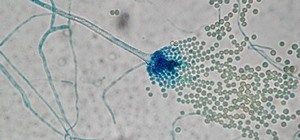


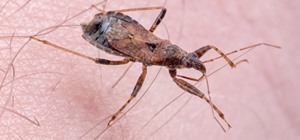
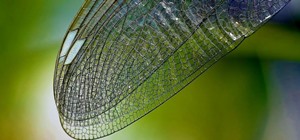


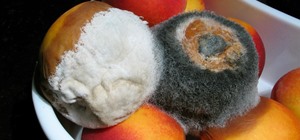
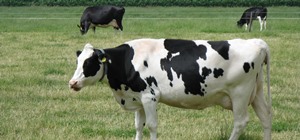














Be the First to Comment
Share Your Thoughts